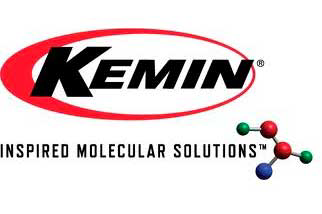Kemin: Challenges, opportunities for meat production

To support the animal nutrition and health industry, Kemin invited key European industry players to discuss the relationship between nutrition, health, environment and industry profitability. It is clear that these topics are the key drivers in tomorrow’s animal production, offering both challenges and opportunities to the industry.
“Nowadays, there is an increased reliance on nutritional solutions to support the production of safe, high quality and low cost animal products for human consumption,” said John Springate, president of the animal nutrition and health division of Kemin in Europe. “Therefore, nutritionists are under pressure to find the best solutions that will both optimize animal performance and maximize profitability.”
Today, nutritionists rely on enzymes to unlock nutritional value from nutrients. In the future, several other nutritional ingredients such as absorption and gut flora enhancers will play a critical role in animal production, and as a result will be added to every tonnage of future feed produced.
Professor Xavier Gellynck from the University of Ghent debated the different challenges for meat production that the industry will face in the coming decades. Several factors will drive the need for animal proteins, such as the anticipated 50% growth of the world population by 2050 (or approximately 2.4 billion more people) and increases in meat consumption as worldwide economic wealth increases in developing regions. These upsurges in meat demand have to be offset by efficiency increases and continued raw material supply. Consequently, raw material prices are expected to remain high and volatile.
With his lecture entitled, “How tough is it to deal with fiber?” Professor Geert Janssens, from Ghent University, challenged the fiber topic. It is well known that fiber has some significant beneficial effects in nutrition, creating fermentative energy, modulating the passage of the digesta and improving fecal consistency. Adversely, fiber lowers the digestibility and palatability of the feed. However, Janssen feels the future feed industry will need to actively explore the use of fiber as a hidden energy source in animal nutrition. Through good use of enzymes, fiber can release additional amino acids and modulate feed intake.
Mauro Di Benedetto, DVM, from the Kemin animal nutrition and health division in Europe, presented how nutritional tools can help alleviate the variation in raw materials feed mills experience on a daily basis. Wheat can have a variable level of Non-Starch Polysaccharide (NSP) fraction, which can result in differences up to 260 kcal/kg in matrix values depending on the origin of the wheat. Data was presented on how the application of the enzyme, Kemzyme® Plus Dry, reduced the variability in wheat significantly.
A similar situation was evaluated for oils and fats, where a wide variety in the Apparent Metabolisable Energy (AME) values was observed. Numerous analyses on the AME value of oils and fats by Kemin scientists indicated variations up ±30% for a single oil type, through the application of natural biosurfactants like Lysoforte, the utilization of energy from the oils and fats was optimized, reducing these variations significantly.
Professor Theo Niewold from the University of Leuven discussed anti-inflammatory feed composition as the key for growth and health. Historically, antibiotics have been used at sub-therapeutic levels and have shown to exert an anti-inflammatory effect. Also several other nutritional ingredients (such as essential oils, fatty acids, polyphenolics) have exerted an anti-inflammatory effect. He believes the future of animal nutrition will need to link the anti-inflammatory effect of useful ingredients to support a natural modulation of animal health maintenance.
At the end of the panel discussion, all industry specialists agreed that in today’s increasingly challenging production environment, optimizing animal nutrition for profitability is critical. Solutions that can link nutrition and health will play a key role in modern animal production to ensure optimal performance and cost effective production.
Join 18,000+ subscribers
Subscribe to our newsletter to stay updated about all the need-to-know content in the pigsector, three times a week. Beheer
Beheer










 WP Admin
WP Admin  Bewerk bericht
Bewerk bericht